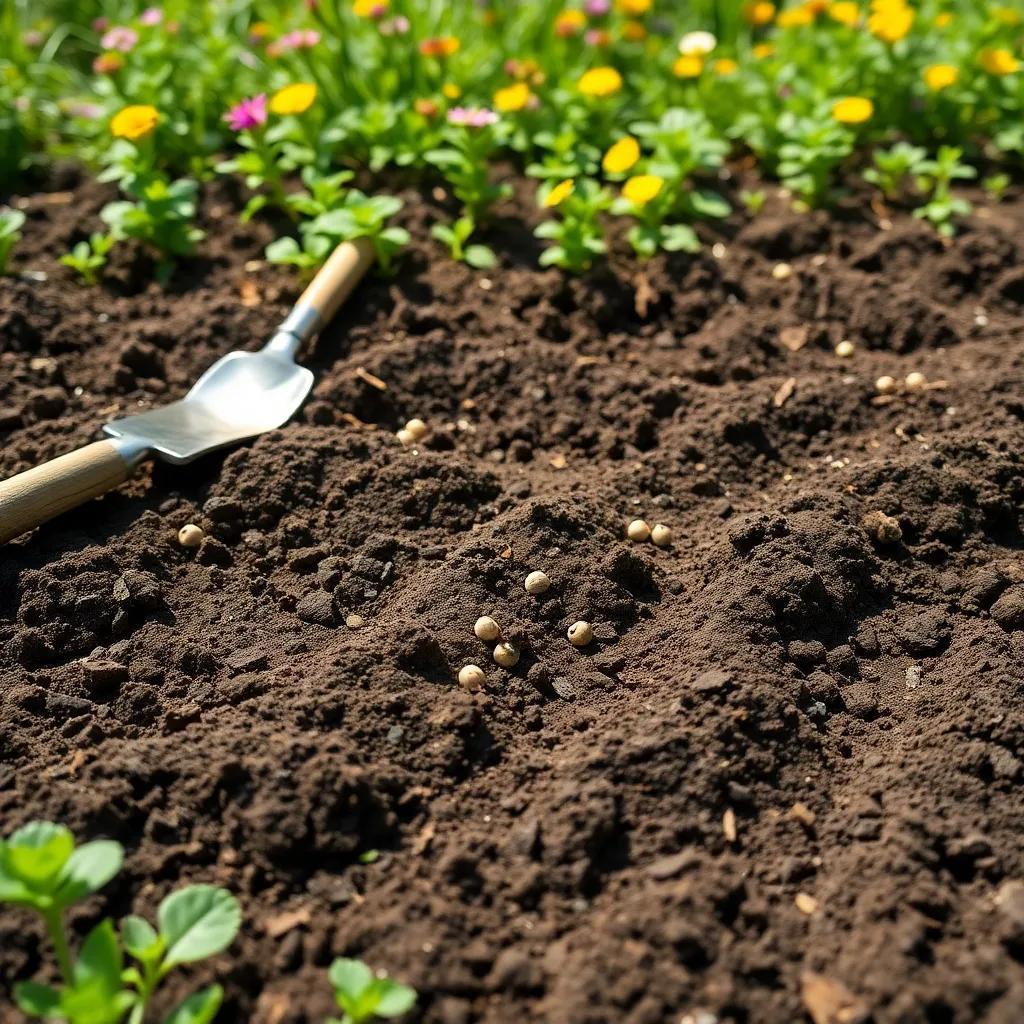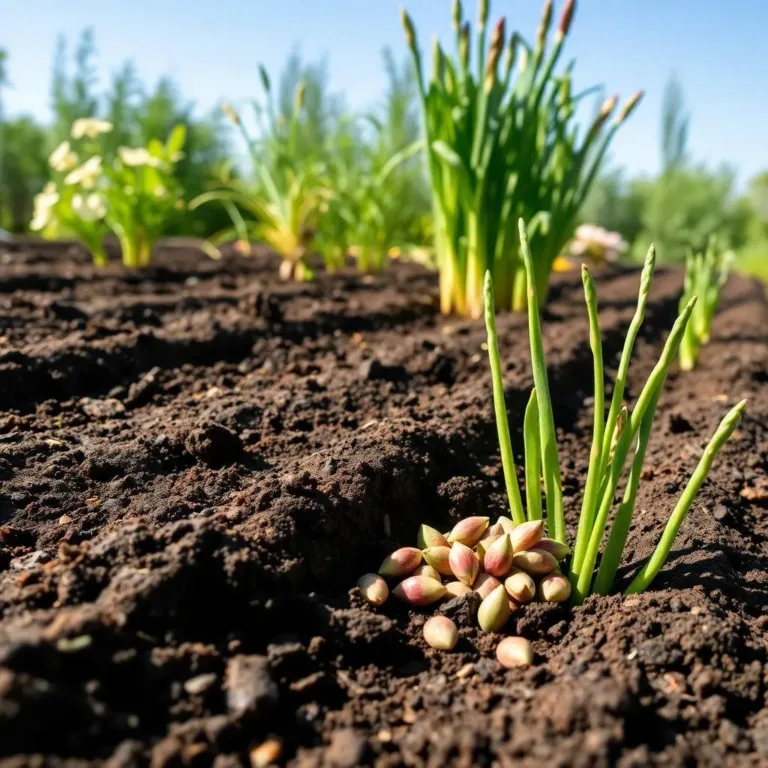Are you ready to grow some delicious asparagus? It’s easier than you might think! Join me as we explore everything from planting seeds at the right depth to caring for your plants, so you can enjoy a bountiful harvest right from your garden! Let’s dig in and have some fun with asparagus gardening!
Factors to Consider for Planting Asparagus Seeds
When you decide to plant asparagus seeds, there are several important things to keep in mind. First, let’s talk about climate. Asparagus loves cooler weather! If you live in a place with hot summers, you might need to take extra care. But don’t worry! With the right watering and care, you can still grow this tasty veggie.
Next, we need to think about soil quality. Asparagus prefers well-draining soil with a pH level between 6.5 and 7.5. You wouldn’t want your plants to sit in soggy soil, would you? Make sure to check your soil type. If it’s too heavy or compact, mix in some organic matter like compost! This not only improves drainage but also feeds your plants.
And let’s not forget about sunlight! Asparagus is a sun lover. It needs at least 6-8 hours of direct sunlight every day. So, choose a sunny spot in your garden, and watch those spears grow!
Also, consider spacing your plants properly. Asparagus needs room to stretch out. Refer to the seed packet for the specific requirements. And hey, have you thought about companion planting? Adding flowers or other vegetables can help your asparagus thrive by keeping pests away or attracting helpful insects.
In short, keeping these factors in mind will help you create the perfect environment for your asparagus seeds, so they can thrive and produce delicious spears!
Soil Preparation for Successful Asparagus Growth
Now that we’ve got our factors sorted, let’s get down to the nitty-gritty of soil preparation! This step is all about creating the best home for your seeds. Trust me, they’ll thank you later!
- Clear the Area: Start by cleaning your planting area. Pull out any weeds, rocks, or debris. You want a clean space for your asparagus to grow. Think of it like giving your plants a fresh start!
- Loosen the Soil: Asparagus has deep roots, so use a garden fork or tiller to break up the soil to at least 12 inches deep. This will make it easier for the roots to stretch and absorb nutrients. Loose soil is happy soil!
- Amend the Soil: Mix in some organic matter like compost or aged manure. This will add nutrients and improve soil texture. Your asparagus will be living the good life!
- Test the pH: Grab a soil testing kit and check the pH of your soil. If it’s too acidic, add some lime. If it’s too alkaline, mix in some sulfur. You want that sweet spot between 6.5 and 7.5!
- Level the Soil: Finally, rake the area to make sure it’s level. This helps with water distribution, so the roots get all the moisture they need.
By preparing your soil correctly, you’ll be setting up your asparagus seeds for a successful journey. Get ready for those fresh spears to spring up and bring in the harvest! Let’s get planting!

Optimal Planting Depth for Asparagus Seeds
Now that we have our soil ready and our factors in check, let’s talk about planting depth! How deep should you plant those asparagus seeds? Well, getting the depth right is super important, and I’m here to make sure you nail it!
For asparagus seeds, you want to plant them about 1/2 inch deep in the soil. This depth gives them just the right amount of coverage for sprouting, without burying them too much! Here’s a simple step-by-step guide to help you out:
- Soak the Seeds: Before planting, soak the asparagus seeds in warm water for about 12-24 hours. This helps soften the seed coat and kickstarts the germination process. Plus, it’s a little spa treatment for your seeds!
- Prepare Furrows: Using a trowel, create furrows in the soil that are 1-2 inches deep. Make sure they are spaced about 12-18 inches apart. This spacing allows your plants room to grow without getting too cozy!
- Planting the Seeds: Place your soaked seeds about 1-2 inches apart within the furrows. It’s like giving each seed its own little space to shine!
- Cover the Seeds: After placing the seeds, gently cover them with ½ inch of fine soil or compost. This light covering helps to protect them while still letting them breathe.
- Watering: After planting, give the furrows a gentle watering. Not too much—just enough to keep the soil moist!
By following these simple guidelines, your asparagus seeds will be all set for a fantastic start. Soon enough, you’ll be counting down the days until those first green shoots appear!
Effective Seed Sowing Techniques for Asparagus
Alright, let’s dive into some seed sowing techniques that will help your asparagus seeds thrive! The way you sow your seeds can make a big difference in how well they germinate and grow. Here are some friendly tips to get you started:
- Direct Sowing: If you’re ready for some hands-on fun, try direct sowing! Just plant those seeds right into the well-prepared garden bed where they will grow. Follow the depth and spacing guidelines we just discussed. This method lets the seeds adapt to their new home right off the bat!
- Starting Indoors: Want to give your seeds a head start? Consider starting them indoors in seed trays or pots! Use a light, quality seed-starting mix and keep them in a warm, well-lit spot. Once the seedlings are strong enough and have a few true leaves, you can transplant them outside!
- Transplanting: If you’ve grown seeds indoors, remember to be gentle while transplanting. Carefully lift the seedlings and place them in your garden bed, ensuring they’re spaced nicely. This way, they won’t feel cramped!
- Timing is Key: The best time to sow your seeds is in early spring, just after the last frost. This gives them plenty of time to establish themselves before the warm weather arrives.
- Staggering Plantings: For a steady supply of asparagus, consider succession planting. Plant seeds at different intervals, so you have asparagus coming in throughout the season.
With these sowing techniques in your gardening toolbox, you’re well on your way to growing a thriving asparagus patch! Happy planting!
Watering and Care Tips for Asparagus Plants
Once your asparagus seeds are planted, it’s time to shift our focus to watering and care! Keeping your plants happy and healthy is key to a fruitful harvest. Here’s what you need to do:
- Watering: Asparagus plants love moisture, especially when they’re young. Aim to keep the soil evenly moist but not soggy. About 1-1.5 inches of water per week should do the trick! You can achieve this through rainfall or by using a garden hose or sprinkler.
- Mulching: Add a layer of mulch around your asparagus plants. This can be straw, wood chips, or compost. Mulching helps keep the soil moist, suppresses weeds, and maintains a consistent soil temperature. Plus, it looks nice!
- Fertilizing: Asparagus is a heavy feeder, so don’t forget to fertilize! In early spring, apply a balanced fertilizer. Follow the package instructions for the best results. Just remember, too much fertilizer can lead to lots of leaves but fewer tasty spears!
- Weed Control: Keep an eye out for pesky weeds that want to steal nutrients from your asparagus. Regularly remove weeds by hand or use mulch to help suppress their growth.
- Pests and Diseases: Keep your plants healthy by checking for pests like asparagus beetles. If you spot any, consider using organic insecticides or simply hand-picking them. Maintaining good airflow and avoiding wet foliage can help prevent disease.
By providing proper watering and care, your asparagus plants will reward you with a delicious harvest! With a little attention, those spears will be popping up before you know it! Happy gardening!

